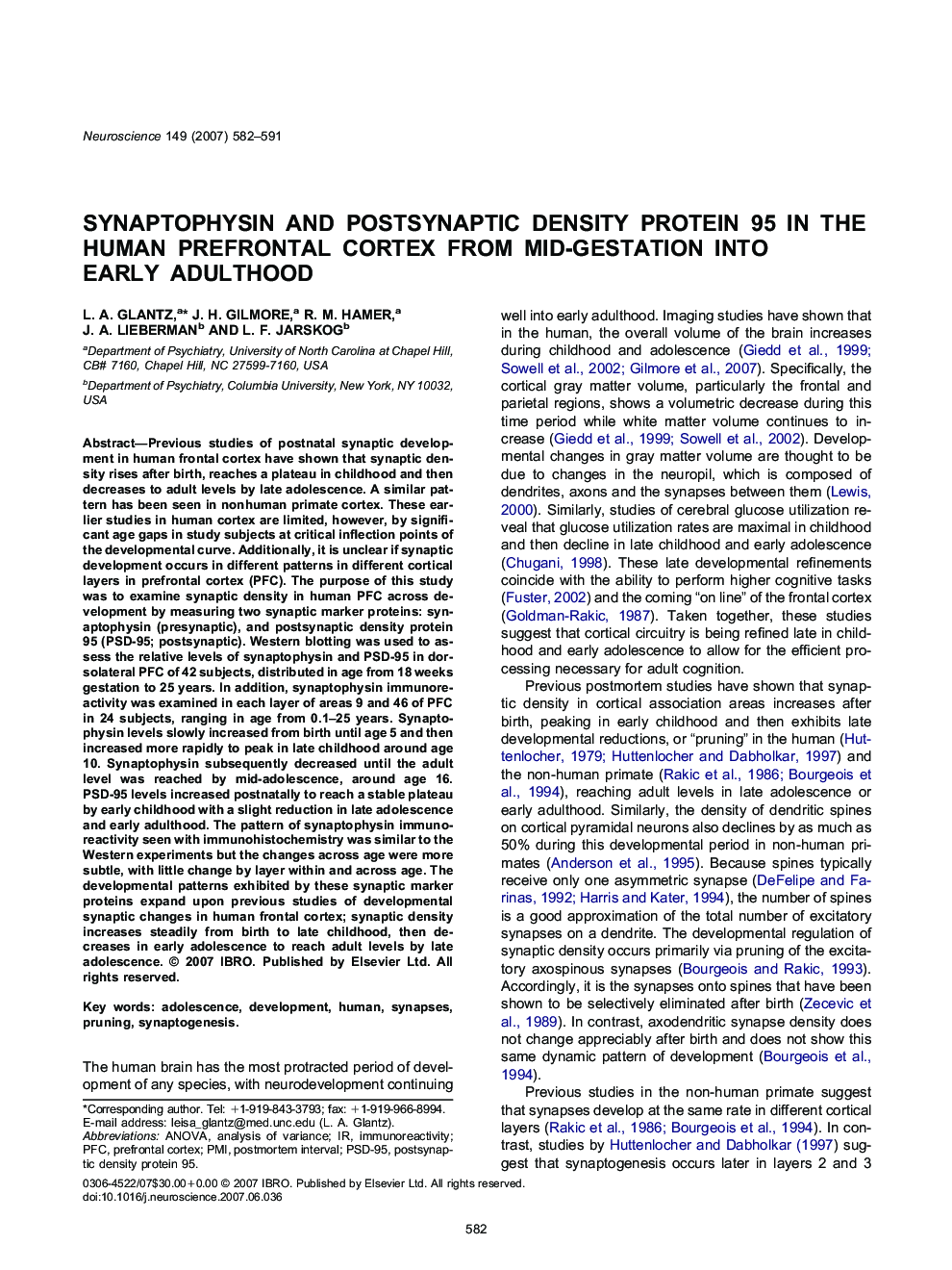| Article ID | Journal | Published Year | Pages | File Type |
|---|---|---|---|---|
| 4342383 | Neuroscience | 2007 | 10 Pages |
Previous studies of postnatal synaptic development in human frontal cortex have shown that synaptic density rises after birth, reaches a plateau in childhood and then decreases to adult levels by late adolescence. A similar pattern has been seen in nonhuman primate cortex. These earlier studies in human cortex are limited, however, by significant age gaps in study subjects at critical inflection points of the developmental curve. Additionally, it is unclear if synaptic development occurs in different patterns in different cortical layers in prefrontal cortex (PFC). The purpose of this study was to examine synaptic density in human PFC across development by measuring two synaptic marker proteins: synaptophysin (presynaptic), and postsynaptic density protein 95 (PSD-95; postsynaptic). Western blotting was used to assess the relative levels of synaptophysin and PSD-95 in dorsolateral PFC of 42 subjects, distributed in age from 18 weeks gestation to 25 years. In addition, synaptophysin immunoreactivity was examined in each layer of areas 9 and 46 of PFC in 24 subjects, ranging in age from 0.1–25 years. Synaptophysin levels slowly increased from birth until age 5 and then increased more rapidly to peak in late childhood around age 10. Synaptophysin subsequently decreased until the adult level was reached by mid-adolescence, around age 16. PSD-95 levels increased postnatally to reach a stable plateau by early childhood with a slight reduction in late adolescence and early adulthood. The pattern of synaptophysin immunoreactivity seen with immunohistochemistry was similar to the Western experiments but the changes across age were more subtle, with little change by layer within and across age. The developmental patterns exhibited by these synaptic marker proteins expand upon previous studies of developmental synaptic changes in human frontal cortex; synaptic density increases steadily from birth to late childhood, then decreases in early adolescence to reach adult levels by late adolescence.
